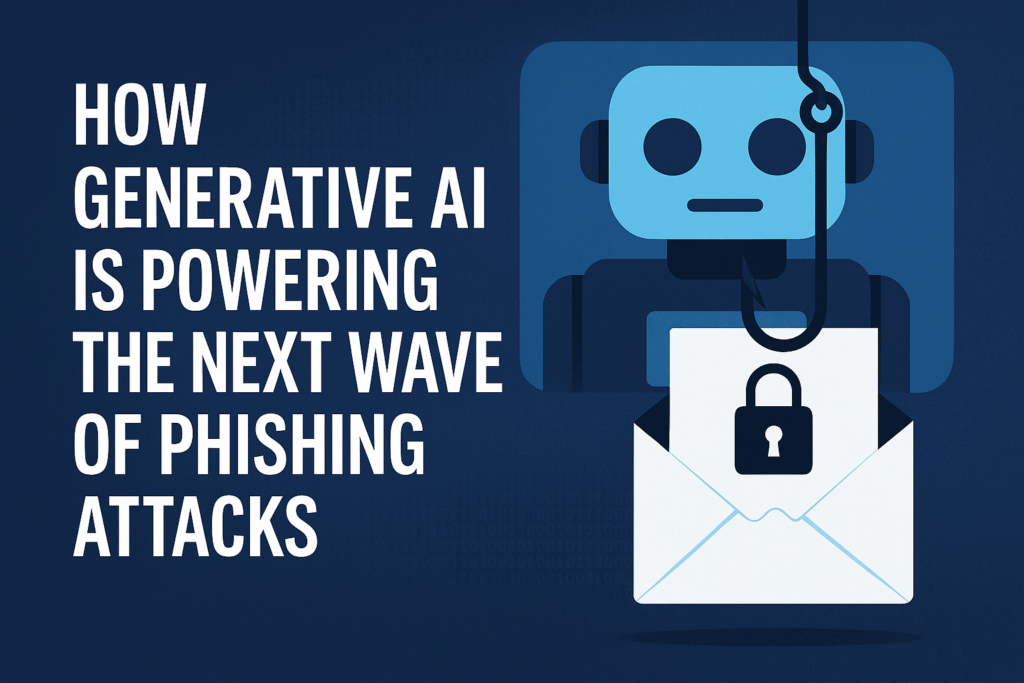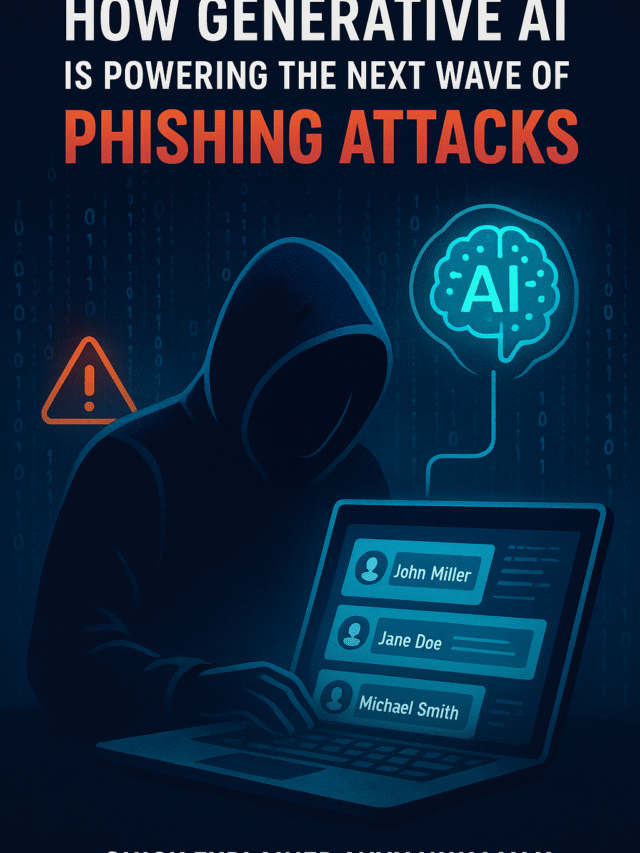
Table of Contents
Cybercriminals have always evolved with technology—but Generative AI phishing attacks are changing the game entirely. In 2025, phishing scams are no longer just sloppy emails filled with typos. Instead, they’re hyper-realistic messages written by AI models that can imitate tone, language, and even personal details with frightening accuracy.
This post explains how generative AI is revolutionizing phishing attacks, why U.S. freelancers and small businesses should pay close attention, and what you can do to protect yourself.
What Are Generative AI Phishing Attacks?
Traditional phishing relied on quantity over quality—hackers would blast out millions of emails and hope someone clicked a malicious link. Today’s Generative AI phishing attacks use advanced AI models like ChatGPT-style tools to create personalized, convincing messages at scale.
Generative AI can mimic a company’s writing style, craft targeted LinkedIn messages, and even generate fake invoices that look legitimate. A recent report from IBM Security found that the average cost of a phishing-related breach in the U.S. rose to over $4.5 million in 2024, highlighting just how dangerous these AI-driven scams have become.
i have summarized this blog in this webstory, check it out here
How Hackers Use Generative AI to Launch Phishing Campaigns
Cybercriminals use AI for more than just email writing. Here’s how Generative AI phishing attacks actually work:
- AI-Generated Content – Attackers use AI to generate authentic-looking emails, documents, and landing pages that appear to come from trusted brands.
- Voice and Video Deepfakes – Using tools like ElevenLabs or Synthesia, hackers create fake voice calls or videos impersonating CEOs, team leaders, or clients.
- Data-Driven Personalization – AI models can analyze public social media profiles to insert personal details, making messages feel real.
- Language Translation – Generative AI eliminates language barriers, allowing cybercriminals to send perfect phishing emails in English, even if they’re operating overseas.
- Automation and Scalability – AI scripts can send thousands of unique, personalized messages per hour, making detection much harder.
According to Check Point Research, phishing attacks increased by over 65% in 2025, largely due to AI’s ability to automate and personalize messages at scale.
Real-World Examples of AI-Generated Phishing
Generative AI phishing isn’t theoretical—it’s already here.
- Example 1: AI-Generated CEO Scam
A U.S. finance firm reported receiving a video message from their “CEO” asking for an urgent wire transfer. It turned out to be an AI deepfake created using publicly available YouTube clips. - Example 2: Freelancer Impersonation
Freelancers on Upwork and Fiverr have reported fake clients using AI-written job offers that lead to credential-stealing links. These Generative AI phishing attacks exploit trust in professional platforms. - Example 3: Fake Software Updates
Cybercriminals have started distributing fake “AI security update” emails that look like they come from Microsoft or Google, tricking users into downloading malware.
These examples show how AI can make scams look not just professional—but personal.
Why Freelancers and Small Businesses Are Prime Targets
Large corporations have entire cybersecurity departments. Freelancers and small businesses in the U.S., on the other hand, often rely on basic email filters and cloud storage without proper training or monitoring. That makes them attractive to attackers deploying Generative AI phishing attacks.
AI can scrape information from social media or portfolio websites to craft messages like:
“Hi Sarah, I saw your latest design project on Behance—can you send me the invoice again?”
It looks harmless but could contain a malicious attachment or link.
According to Cybersecurity & Infrastructure Security Agency (CISA), over 90% of successful cyberattacks begin with a phishing email. With AI in the mix, that number could rise even higher in 2025.
How to Spot Generative AI Phishing Attacks
Even though AI phishing messages look convincing, there are still warning signs to look out for:
- Slight inconsistencies in tone or formatting (AI sometimes over-formalizes language).
- Urgent or emotional language, urging you to act fast.
- Requests for sensitive data like passwords, payment info, or verification codes.
- Suspicious sender domains that differ slightly from legitimate company emails.
- Unexpected attachments or shared links—especially from new contacts.
Use security extensions like uBlock Origin or Privacy Badger to block malicious scripts embedded in emails or webpages.
How to Protect Yourself from AI-Driven Phishing
Preventing Generative AI phishing attacks requires combining smart habits with solid cybersecurity tools:
- Enable Two-Factor Authentication (2FA): Even if a hacker steals your password, they can’t access your account without a secondary code.
- Use Secure Email Services: Platforms like Proton Mail and Tutanota encrypt your messages end-to-end.
- Keep Software Updated: Outdated browsers and plugins can expose vulnerabilities that phishing links exploit.
- Train Your Team (or Virtual Assistant): If you hire help online, ensure they can recognize Generative AI phishing attacks and verify suspicious messages before responding.
- Check Links Before Clicking: Hover over links to inspect the real destination. AI-crafted messages often hide URLs under authentic-looking text.
- Use a Password Manager: Tools like Bitwarden or 1Password can auto-fill credentials only on trusted domains, helping you avoid fake login pages.
The Future of Phishing in the Age of Generative AI
As generative AI continues to evolve, so will cyber threats. Experts predict that AI-powered phishing will soon extend to real-time voice calls, video conferencing, and even interactive chatbots pretending to be customer support agents.
At the same time, defensive AI systems are also improving. Tech giants like Google and Microsoft are training their own AI algorithms to detect patterns of Generative AI phishing attacks faster than humans can. The cybersecurity arms race is officially on.
Final Thoughts
Generative AI phishing attacks represent the next generation of cybercrime—smarter, faster, and more personalized than anything before. For freelancers, entrepreneurs, and small business owners in the U.S., awareness and proactive defense are critical.
By learning to spot AI-generated content, using secure tools, and double-checking every message before clicking, you can stay one step ahead of digital scammers.
If you found this article helpful, share it with your network—especially anyone who works remotely or manages client data online. Together, we can outsmart AI-powered phishing before it outsmarts us.
Stay secure. Stay informed.
For more U.S.-focused cybersecurity guides, visit CISA’s official website or check out the latest blog updates here on CyberSafetyZone.
If you like this blog then share it with your friends who might need it.
Check this blog I have discussed more about it in details and shared some useful cybersecurity tips: Critical Cyber Warning: How U.S. Freelancers and Small Businesses Can Spot AI-Generated Phishing Emails in 2025
